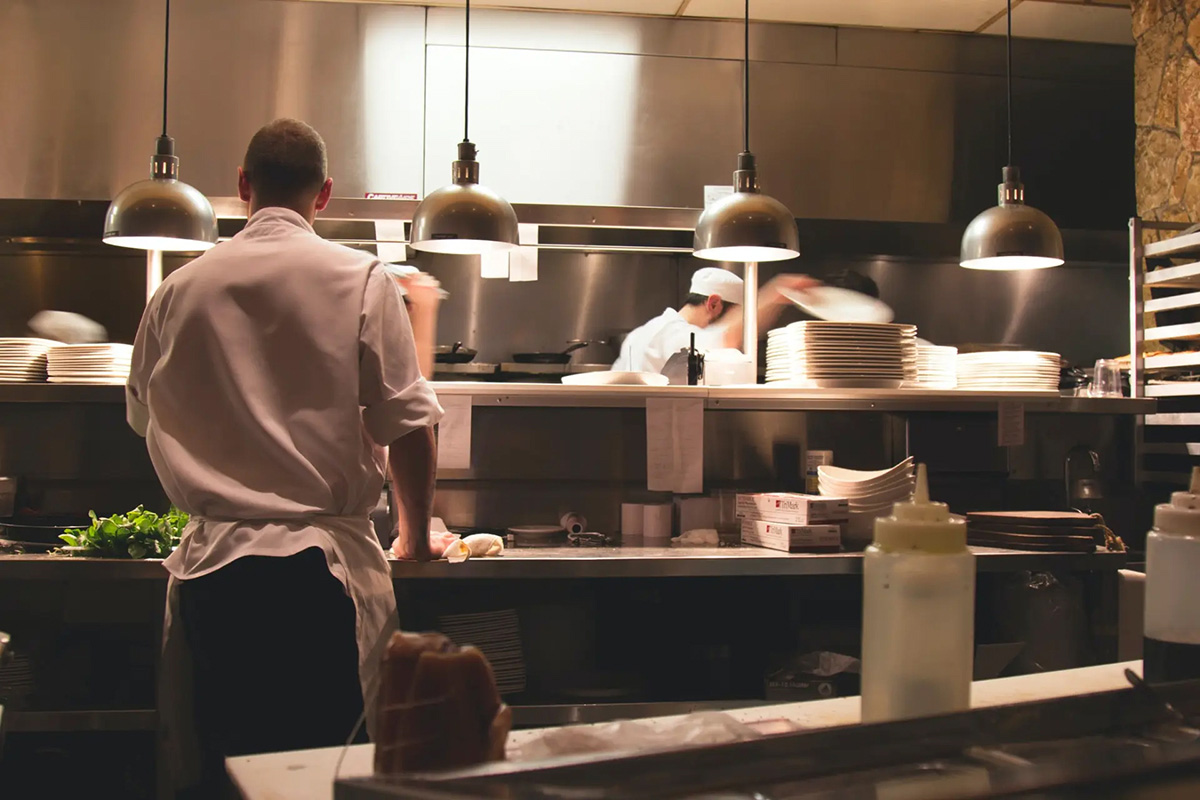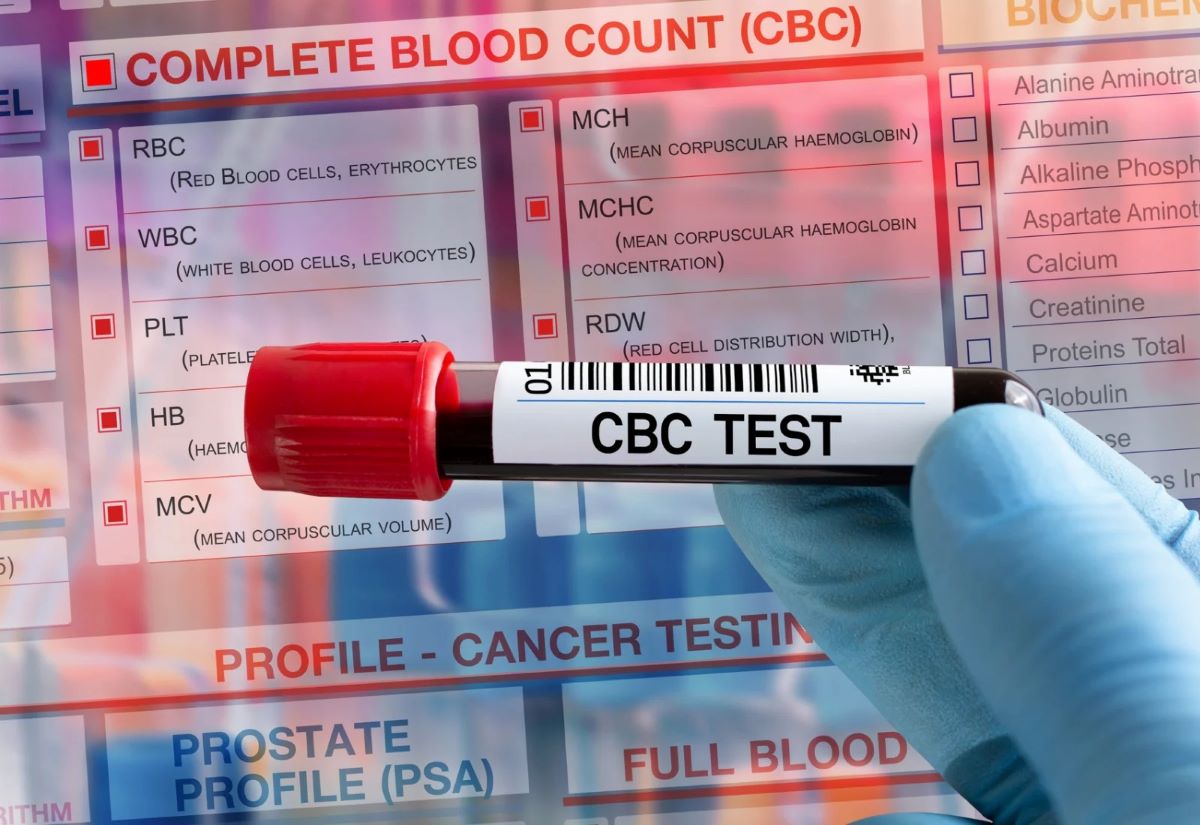

Finance
How To Get A Business Loan For Restaurant
Modified: December 30, 2023
Looking to finance your restaurant? Learn how to get a business loan for your restaurant and secure the funding you need to start or expand your business.
(Many of the links in this article redirect to a specific reviewed product. Your purchase of these products through affiliate links helps to generate commission for LiveWell, at no extra cost. Learn more)
Table of Contents
- Introduction
- Understanding the Importance of Business Loans for Restaurants
- Preparing Your Restaurant Business for a Loan
- Finding the Right Lender for Your Restaurant Business Loan
- Gathering the Required Documents for Your Restaurant Business Loan Application
- Understanding the Loan Application Process for Restaurant Businesses
- Tips for Increasing Your Chances of Being Approved for a Restaurant Business Loan
- Alternative Financing Options for Restaurant Businesses
- Conclusion
Introduction
Running a successful restaurant requires careful planning, passion, and, of course, sufficient funds. Whether you are starting a new restaurant or looking to expand your current one, securing a business loan can be a game-changer. A restaurant business loan can provide the necessary capital to cover costs such as equipment purchases, renovations, marketing campaigns, and even hiring additional staff.
However, obtaining a business loan for a restaurant is not always a straightforward process. Lenders often scrutinize restaurant businesses due to the potential risks involved in the foodservice industry. It is essential to understand the importance of business loans for restaurants and be well-prepared to increase your chances of approval.
In this article, we will discuss the steps you need to take to get a business loan for your restaurant. From preparing your business for a loan and finding the right lender to understanding the application process and alternative financing options, we will cover everything you need to know to secure the funding your restaurant needs.
So, if you are ready to take your restaurant business to the next level, let’s dive in and explore how to obtain a business loan that can make your dreams a reality.
Understanding the Importance of Business Loans for Restaurants
Business loans play a crucial role in the growth and success of restaurants. Whether you are a small café or a high-end fine dining establishment, having access to capital is essential for various reasons.
Firstly, restaurants often require substantial upfront investments in equipment, furnishings, and renovations. The cost of setting up a new restaurant or upgrading an existing one can be overwhelming. A business loan can bridge the financial gap, allowing you to purchase the necessary equipment, create an inviting ambiance, and update your kitchen facilities.
Secondly, marketing and advertising are vital for attracting customers to your restaurant. From launching creative marketing campaigns to utilizing social media platforms, these efforts require financial resources. With a business loan, you can invest in advertising strategies that will help promote your restaurant and reach a wider audience.
Additionally, managing cash flow is an ongoing challenge for restaurants. There are often fluctuations in revenue, especially during slower seasons or unexpected circumstances, such as a pandemic. A business loan can provide you with the working capital needed to cover operational expenses, pay staff salaries, and ensure that your restaurant continues to run smoothly, even during leaner times.
Moreover, a business loan can support your expansion plans. If you wish to open a new location, introduce a catering service, or expand your restaurant’s seating capacity, securing a loan can make these growth opportunities possible. It allows you to seize profitable opportunities and increase your market share.
By securing a business loan for your restaurant, you not only gain access to funds, but you also demonstrate credibility and commitment to your business. Lenders recognize that investing in restaurants can be profitable, given the industry’s potential for high margins and customer demand. Showing that you are committed to the success of your restaurant through obtaining a loan can build trust with lenders and open doors to future funding opportunities.
In summary, business loans are instrumental in the restaurant industry, providing opportunities for growth, covering initial expenses, managing cash flow, and demonstrating commitment to your business. Understanding the importance of business loans and how they can support your restaurant’s success is the first step towards securing the necessary funding to achieve your goals.
Preparing Your Restaurant Business for a Loan
Before applying for a business loan for your restaurant, it is essential to prepare your business to increase your chances of approval. Taking the following steps will demonstrate to lenders that your restaurant is a promising investment:
- Create a solid business plan: A well-crafted business plan showcases your restaurant’s concept, target market, competitive analysis, financial projections, and growth strategies. It provides lenders with a comprehensive understanding of your business and its potential for success.
- Build a strong credit profile: Lenders assess your creditworthiness when considering your loan application. Establishing and maintaining a good credit score is crucial. Pay your bills on time, maintain a low credit utilization ratio, and resolve any outstanding debts or discrepancies on your credit report.
- Organize your financial documents: Gather and organize all the necessary financial documents, such as tax returns, profit and loss statements, balance sheets, bank statements, and cash flow projections. Having these documents readily available demonstrates your financial stability and transparency to lenders.
- Improve your cash flow management: Effective cash flow management is vital to the success of your restaurant. Implement systems to monitor and track your income and expenses. Demonstrating that you have a solid grasp of your restaurant’s financials will give lenders confidence in your ability to repay the loan.
- Minimize existing debts: If possible, pay off or reduce any existing debts before applying for a loan. Lenders consider your debt-to-income ratio when evaluating your loan application. Lowering your debt obligations strengthens your financial position and improves your chances of loan approval.
- Enhance your collateral: Collateral provides security to lenders in case of default. Assess your assets and determine if you can offer collateral, such as equipment, property, or inventory. Having valuable assets can increase your loan eligibility and potentially secure a lower interest rate.
- Develop a strong relationship with your bank: If you already have a banking relationship, leverage it to your advantage. Regularly communicate with your bank, maintain a positive cash flow, and demonstrate responsibility with your existing accounts. A strong relationship with your bank can increase your chances of loan approval.
By adequately preparing your restaurant for a loan, you present yourself as a responsible and credible borrower. Taking the time to build a solid credit profile, organize financial documents, and showcase your business’s potential will greatly improve your chances of securing the funding your restaurant needs.
Finding the Right Lender for Your Restaurant Business Loan
When seeking a business loan for your restaurant, it is crucial to find the right lender who understands the unique needs and challenges of the foodservice industry. Here are some factors to consider when searching for the ideal lender:
- Specialization in restaurant industry: Look for lenders who specialize in providing loans to restaurants or other businesses within the hospitality sector. These lenders will have a better understanding of the specific challenges faced by restaurant owners and can tailor loan terms accordingly.
- Experience and reputation: Research the lender’s track record and reputation in the industry. Look for testimonials or reviews from other restaurant owners who have worked with them. A lender with a solid reputation and experience working with restaurants will likely offer better terms and a smoother loan application process.
- Loan terms and interest rates: Compare the loan terms and interest rates offered by different lenders. Look for competitive rates that align with your restaurant’s financial capabilities. Consider the repayment period, monthly installments, and any additional fees or charges associated with the loan.
- Flexibility and customization: Every restaurant has unique financial needs and circumstances. Look for a lender who offers flexibility in loan terms and can customize a solution that suits your specific requirements. This may include providing deferred repayment options, seasonal payment plans, or interest-only periods.
- Application process and timeline: Consider the lender’s application process and timeline. Are they efficient and responsive? Do they require an extensive list of documents or have a cumbersome application process? Opt for a lender with a streamlined application process to save time and minimize stress.
- Additional services or resources: Some lenders offer additional services or resources that can benefit your restaurant business. This may include financial education, business coaching, or networking opportunities. Assess the value beyond the loan itself that a lender can provide to support the growth and success of your restaurant.
- Seek professional advice: If navigating the world of business loans feels overwhelming, consider seeking advice from a financial advisor or a business consultant with expertise in the restaurant industry. They can provide valuable insights and help you make an informed decision when choosing the right lender for your restaurant business loan.
Remember, finding the right lender is crucial to ensure a positive loan experience. Take the time to research and compare different lenders, considering their specialization, reputation, loan terms, flexibility, application process, and additional services. By choosing the right lender, you’ll be on your way to securing a business loan that meets your restaurant’s needs.
Gathering the Required Documents for Your Restaurant Business Loan Application
When applying for a business loan for your restaurant, it is essential to gather and organize the necessary documents to support your loan application. Lenders will require specific information to assess your eligibility and make an informed decision. Here are the key documents you should gather:
- Business plan: Prepare a comprehensive business plan that outlines your restaurant’s concept, target market, financial projections, marketing strategies, and growth plans. Your business plan showcases your vision and helps lenders understand the viability and potential of your restaurant.
- Financial statements: Provide your restaurant’s financial statements, including profit and loss statements, balance sheets, and cash flow statements. These documents demonstrate your restaurant’s financial health, revenue, expenses, and profitability. They are crucial for lenders to assess your ability to repay the loan.
- Tax returns: Include personal and business tax returns for the previous three years. Tax returns provide an overview of your income, expenses, and tax obligations, allowing lenders to assess your financial stability and track record.
- Bank statements: Gather several months’ worth of bank statements for both personal and business accounts. Bank statements provide insights into your cash flow, account balances, business transactions, and overall financial activity.
- Collateral documentation: If you are offering collateral to secure the loan, gather the necessary documentation, such as property deeds, equipment titles, or inventory appraisals. These documents prove ownership and the value of the assets being pledged.
- Legal documents: Include any relevant legal documents, such as licenses, permits, leases, or contracts. These documents demonstrate the legal compliance and legitimacy of your restaurant business.
- Personal identification: Provide identification documents, such as driver’s licenses or passports, for all owners or partners involved in the restaurant. Lenders require this information as part of the application process.
- Business licenses and permits: Include copies of all necessary licenses and permits required to operate your restaurant. These documents validate your restaurant’s compliance with local regulations and provide assurance to the lender.
- Insurance policies: If you have insurance coverage for your restaurant, include copies of your insurance policies. This demonstrates that you are adequately protecting your business against potential risks.
It’s essential to keep these documents organized and up to date. Ensure that all financial statements and records are accurate and contain the necessary supporting data. Lenders rely on these documents to evaluate your loan application, assess risk, and make a funding decision.
Before submitting your application, review all the documents to ensure they are complete and meet the lender’s requirements. If you have any questions or concerns, consult with your lender or seek guidance from a financial advisor to ensure you have all the necessary documentation in order to increase your chances of a successful loan application.
Understanding the Loan Application Process for Restaurant Businesses
Getting a business loan for your restaurant involves going through a loan application process. Understanding this process can help you navigate the steps and increase your chances of success. Here is an overview of the typical loan application process for restaurant businesses:
- Research and preparation: Before applying for a loan, research different lenders and loan options to find the best fit for your restaurant. Prepare all the necessary documentation and ensure your financials are in order.
- Initial application: Start by completing an initial loan application form provided by the lender. This typically includes general information about your restaurant, loan amount requested, and purpose of the loan.
- Submission of required documents: Provide the lender with all the required documents to support your loan application. These documents typically include your business plan, financial statements, tax returns, bank statements, and any other supporting documentation outlined by the lender.
- Loan underwriting: The lender will review your application and documents to assess your creditworthiness, financial stability, and ability to repay the loan. This process involves analyzing your credit history, evaluating your business’s financials, and assessing the collateral offered (if applicable).
- Loan approval or denial: Based on their evaluation, the lender will make a decision regarding your loan application. If approved, they will provide you with details of the loan terms, repayment schedule, and interest rate. If denied, the lender should provide a clear explanation of the reasons for the denial.
- Acceptance of loan terms: If you agree to the loan terms, you will need to sign a loan agreement provided by the lender. Review the terms carefully, including the interest rate, repayment schedule, any fees or charges, and consequences of default.
- Disbursement of funds: Once you have accepted the loan terms, the lender will disburse the funds directly to your business bank account. Depending on the loan agreement, the funds may be provided in a lump sum or in installments.
- Loan repayment: As per the agreed-upon repayment schedule, you will need to make regular payments to the lender, including principal and interest. Adhering to the repayment plan is crucial to maintain a good relationship with the lender and avoid any penalties or negative impact on your credit score.
It’s important to note that the loan application process may vary slightly depending on the lender and the type of loan being obtained. Be sure to carefully review the requirements and instructions provided by the lender and seek clarification on any aspects that you do not understand.
Prioritize open communication with the lender throughout the application process. Ask questions, provide any additional requested information promptly, and follow up on the status of your application. Maintaining a positive and professional relationship with the lender can contribute to a smooth loan application process for your restaurant business.
Tips for Increasing Your Chances of Being Approved for a Restaurant Business Loan
When applying for a business loan for your restaurant, it’s important to take proactive steps to increase your chances of approval. Here are some valuable tips to help enhance your loan application:
- Build a strong credit profile: Maintain a good credit score by paying your bills on time and managing your debts responsibly. Lenders rely on your credit history to evaluate your creditworthiness.
- Showcase a solid business plan: Develop a thorough and well-structured business plan that highlights your restaurant’s unique selling proposition, target market, financial projections, and growth strategies. A compelling business plan demonstrates to lenders that you have a clear vision and a plan for success.
- Prepare detailed financial statements: Ensure your financial statements, including profit and loss statements, balance sheets, and cash flow statements, are accurate and up to date. These documents provide insights into your restaurant’s financial health and its ability to generate revenue and repay the loan.
- Highlight relevant industry experience: Highlight your experience and expertise in the restaurant industry. Lenders may view your experience as an indicator of your ability to run a successful restaurant business.
- Offer collateral: If possible, provide collateral to secure the loan. Collateral provides lenders with added security in case of default and can increase your chances of approval. Examples of collateral may include property, equipment, or inventory.
- Show a solid cash flow: Demonstrate that your restaurant has a positive cash flow and can generate sufficient revenue to cover expenses and repay the loan. Implement effective cash flow management practices to improve your financial position.
- Minimize existing debts: Reduce your existing debts and improve your debt-to-income ratio. Lenders consider this ratio when assessing your ability to handle additional debt obligations.
- Build a relationship with your lender: Establish a positive and professional relationship with the lender. Communicate regularly, provide requested information promptly, and demonstrate your commitment to your business’s success.
- Consider a smaller loan amount: Request a loan amount that is realistic and aligned with your restaurant’s financial needs. Lenders may be more willing to approve a smaller loan that is well-supported by your financials.
- Seek professional advice: If you feel overwhelmed or uncertain about the loan application process, consider seeking guidance from a financial advisor or business consultant with experience in the restaurant industry. They can provide valuable advice and help you present your loan application in the best possible manner.
Remember, there is no guarantee of loan approval, but implementing these tips can significantly increase your chances of securing a business loan for your restaurant. It shows lenders that you are proactive, responsible, and capable of successfully managing your restaurant business and its financial obligations.
Take the time to thoroughly prepare your loan application, address any weaknesses in your financials, and showcase the strengths of your restaurant. By presenting a compelling case to lenders, you will be well-positioned to secure the funding your restaurant needs to grow and thrive.
Alternative Financing Options for Restaurant Businesses
While traditional business loans from banks are a common financing option for restaurant businesses, there are alternative avenues worth exploring. These alternative financing options can provide additional flexibility and help you secure the funding needed for your restaurant’s growth and success. Here are a few alternatives to consider:
- Equipment financing: If you need funds specifically for purchasing or upgrading restaurant equipment, equipment financing can be a viable option. With this type of financing, the equipment itself serves as collateral, making it easier to secure the loan.
- Merchant cash advances: Merchant cash advances allow you to receive upfront cash in exchange for a percentage of your future credit and debit card sales. While they often come with higher interest rates, they offer more flexibility in terms of repayment and can be a suitable option for restaurants with fluctuating sales.
- Crowdfunding: Crowdfunding platforms enable you to raise funds from a large number of individuals who believe in your restaurant concept. By offering incentives or rewards, such as free meals or exclusive experiences, you can incentivize people to contribute to your campaign.
- Small Business Administration (SBA) loans: The U.S. Small Business Administration offers various loan programs specifically designed to help small businesses, including restaurants. SBA loans generally have more favorable terms and lower interest rates than traditional bank loans.
- Lines of credit: A business line of credit provides you with access to a predetermined amount of funds that you can draw from as needed. You only pay interest on the amount you borrow, making it a flexible financing option for covering short-term expenses or managing cash flow gaps.
- Angel investors: Angel investors are individuals or groups of individuals who invest their own funds into promising businesses in exchange for equity or a share of future profits. Consider seeking out angel investors with an interest in the restaurant industry who can provide not only capital but also valuable expertise and connections.
- P2P lending: Peer-to-peer lending platforms connect borrowers directly with individual lenders. This alternative financing option allows you to borrow funds from individuals who are willing to lend money, often at competitive interest rates.
- Family and friends: Don’t overlook the possibility of borrowing from family and friends who believe in your restaurant business. It’s important to approach these loans with professionalism and have a clear repayment plan in place.
Before pursuing alternative financing options, carefully consider the terms and implications of each choice. Compare interest rates, repayment terms, fees, and any potential impact on your ownership or control of the business.
While alternative financing options may differ from traditional bank loans, they can provide the necessary capital to help your restaurant thrive. Explore these options, weigh the pros and cons, and choose the financing solution that best aligns with your restaurant’s needs and goals.
Conclusion
Securing a business loan for your restaurant can be a transformative step in achieving your culinary dreams and taking your establishment to the next level. By understanding the importance of business loans for restaurants and adequately preparing your business, you can increase your chances of approval and secure the funding needed to grow and succeed.
Throughout this article, we discussed various aspects of obtaining a business loan for your restaurant, including the importance of business loans, preparing your business for a loan, finding the right lender, gathering the required documents, understanding the loan application process, and exploring alternative financing options.
Remember, when preparing your restaurant business for a loan, prioritize building a solid credit profile, creating a comprehensive business plan, and organizing your financial documents. This establishes credibility and demonstrates your commitment to the success of your restaurant.
In the loan application process, research and choose a lender that specializes in working with restaurants, offers competitive loan terms, and understands the unique needs and challenges of your industry.
Gathering the necessary documents, such as your business plan, financial statements, and tax returns, showcases your restaurant’s financial stability and potential for success. Taking the time to organize and present these documents in a professional manner can greatly improve your loan application.
Exploring alternative financing options can provide additional flexibility and opportunities to fund your restaurant’s growth. Consider options such as equipment financing, merchant cash advances, crowdfunding, SBA loans, lines of credit, angel investors, P2P lending, or seeking support from family and friends.
In conclusion, securing a business loan for your restaurant requires careful preparation, research, and selecting the right lender. By effectively managing your finances, showcasing your restaurant’s potential, and exploring alternative financing options, you can increase your chances of approval and acquire the necessary funds to propel your restaurant to success. Good luck on your journey to obtaining a business loan and realizing your restaurant’s full potential!














